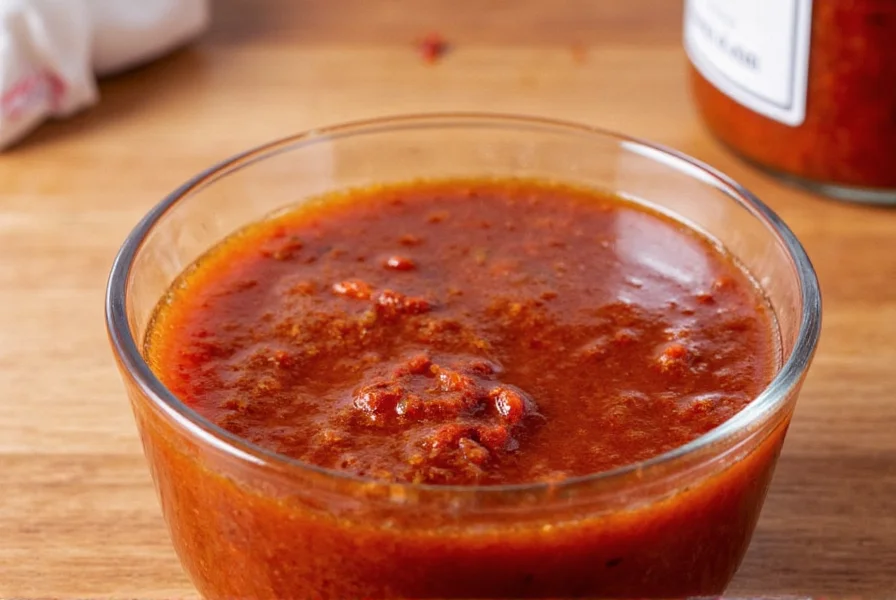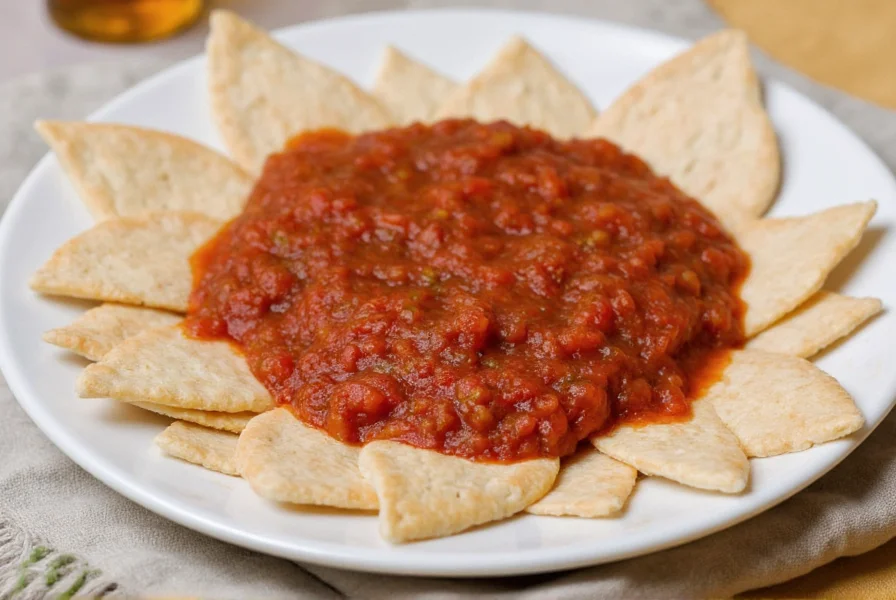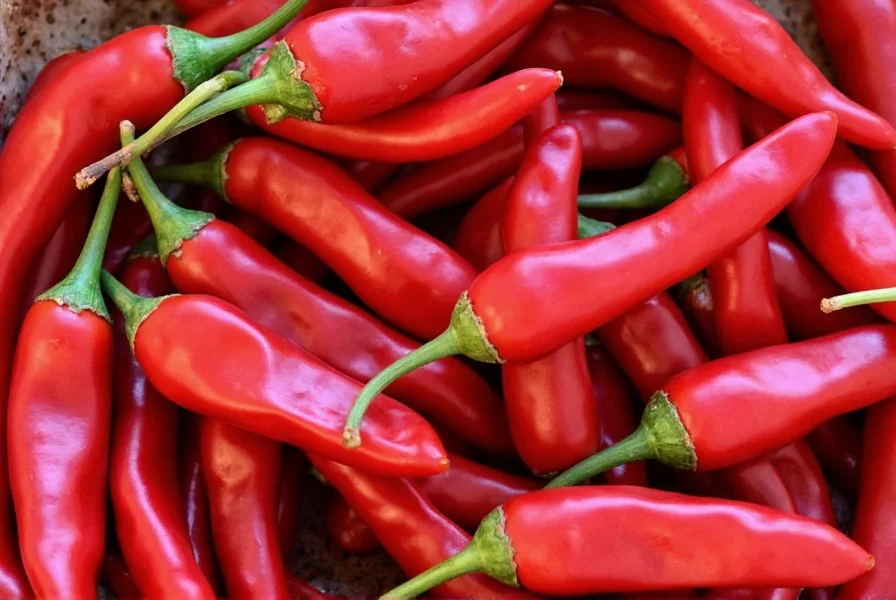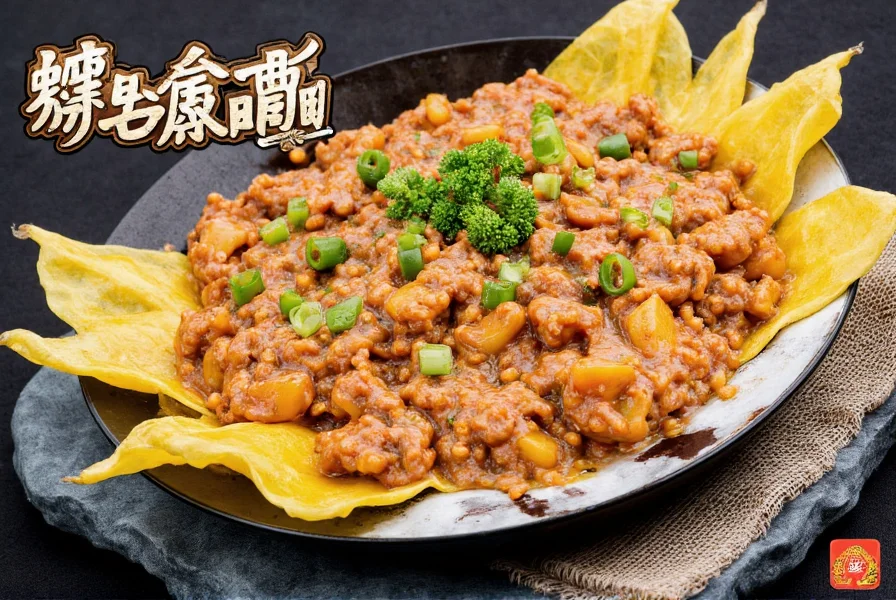Yes, chile de árbol peppers are spicy. They range from 15,000 to 30,000 Scoville Heat Units (SHU), making them significantly hotter than jalapeños but milder than cayenne peppers. This guide explains their heat level, flavor profile, and how to use them in cooking.
Table of Contents
- Introduction: The Spice You Can't Ignore
- What Makes a Pepper Spicy? A Quick Primer
- Chile de Árbol at a Glance
- How Spicy Are Chile de Árbol?
- Comparing Heat Levels: Where Do They Fit?
- Cooking with Chile de Árbol: Tips & Tricks
- Buying Guide: Choosing the Best Chiles
- Conclusion: Worth the Burn?
- Frequently Asked Questions
Introduction: The Spice You Can't Ignore

Chile de árbol peppers deliver a balanced heat that enhances dishes without overwhelming them. With a Scoville rating between 15,000 and 30,000 units, they sit comfortably in the medium-to-hot range of peppers, offering smoky, nutty, and grassy flavors with citrusy notes.
What Makes a Pepper Spicy? A Quick Primer

Spiciness in peppers comes from capsaicin, which activates pain receptors in your mouth. The Scoville scale measures this heat, ranging from 0 SHU for bell peppers to over 1.5 million SHU for Carolina Reapers.
Chile de Árbol at a Glance
| Characteristic | Description |
|---|---|
| Common Name | Tree chili / Bird's beak chili |
| Origin | Mexico |
| Color | Bright red when mature |
| Length | 2–3 inches long |
| Flavor Profile | Smoky, nutty, grassy, with citrusy notes |
| Heat Level | Medium to hot (~15,000–30,000 SHU) |
| Common Uses | Salsas, marinades, soups, stews |
Chile de árbol gets its name from the Spanish words meaning "tree chili," likely due to the plant's shrubby growth habit. These thin, tail-like peppers pack a punch both in flavor and heat, making them a favorite among chefs and home cooks alike.
How Spicy Are Chile de Árbol?

To answer our original question directly: Yes, chile de árbol is spicy — with a Scoville rating between 15,000 and 30,000 units. For context:
- They're hotter than jalapeños (2,500–8,000 SHU)
- A bit less fiery than cayenne (30,000–50,000 SHU)
- About the same as Tabasco sauce (30,000–50,000 SHU)
So, if you love a good kick but aren't ready to tackle ghost peppers, chile de árbol could be your new best friend in the kitchen.
Comparing Heat Levels: Where Do They Fit?

Here's a comparison of chile de árbol with other common peppers:
| Pepper | Scoville Heat Units (SHU) | Relative Heat |
|---|---|---|
| Bell Pepper | 0 | Cool as a cucumber |
| Jalapeño | 2,500–8,000 | Perfect for pizza |
| Chile de Árbol | 15,000–30,000 | Tongue tingler |
| Cayenne | 30,000–50,000 | Hotter than a summer sidewalk |
| Hatch Green Chili | 2,500–10,000 | Southwestern soul |
| Habanero | 100,000–350,000 | Lip-numbing legend |
Chile de árbol brings more heat than your average jalapeño, but it still leaves room for flavor to shine through. That balance makes it perfect for recipes where you want noticeable spice without overwhelming everything else.
Cooking with Chile de Árbol: Tips & Tricks

Whether dried or fresh, these peppers add a bold, smoky depth to a wide variety of dishes.
Top 5 Ways to Use Chile de Árbol
- Make Homemade Salsa: Toast a few dried chiles de árbol, blend with garlic, lime, and tomatoes, and boom — instant flavor bomb.
- Add Heat to Soups: Crushed dried chiles make a great base for spiced-up broths and bean soups.
- Infuse Oils or Vinegars: Place whole chiles in olive oil or apple cider vinegar to create custom infusions for dressings and marinades.
- Spice Up Marinades: Blend dried chiles with herbs and citrus to make a marinade that'll take your grilled meats to the next level.
- Use Fresh in Sautéed Dishes: Dice and sauté fresh chiles de árbol with onions and garlic for an aromatic base in stir-fries or tacos.
Buying Guide: Choosing the Best Chiles

Whether you're shopping at a local mercado or browsing online, here's what to look for when choosing chile de árbol peppers.
Fresh vs. Dried: Which Should You Buy?
| Type | Pros | Cons | Best For |
|---|---|---|---|
| Fresh | Vibrant color, crisp texture, mild heat | Short shelf life | Salsas, raw sauces, quick-cook dishes |
| Dried | Concentrated flavor, longer shelf life | More heat, need rehydrating or toasting | Stews, braises, pastes, infused oils |
Top Picks for Chile de Árbol Products
- El Yucateco Chile de Árbol Sauce
- Features: Smoky, tangy, and slightly fruity
- Advantages: Ready to use; adds authentic heat to tacos, eggs, and seafood
- Target Audience: Home cooks, foodies, salsa lovers
- Best For: Drizzling over tacos al pastor or mixing into guacamole
- La Costeña Dried Chile de Árbol Pack
- Features: Whole dried chiles, clean packaging
- Advantages: Great for grinding into powder or using in soups
- Target Audience: Serious cooks, chili-heads, DIYers
- Best For: Making homemade salsas, moles, or adobos
- Don Elefante Chile de Árbol Crushed
- Features: Crushed dried chiles in a shaker bottle
- Advantages: Convenient, no prep needed
- Target Audience: Busy professionals, lazy gourmands
- Best For: Sprinkling on grilled corn, fries, or popcorn
Conclusion: Worth the Burn?

Chile de árbol peppers deliver a complex, fiery kick that's hard to beat. With their vibrant flavor and punchy heat, these peppers deserve a spot in every adventurous cook's pantry.
Whether you're tossing them into soups, crushing them into spice blends, or blending them into salsas, chile de árbol delivers a complex, fiery kick that's hard to beat. Just remember: start small, taste as you go, and enjoy the ride. Because when it comes to spice, the journey is half the fun.
Frequently Asked Questions About Chile de Árbol
Are chile de árbol peppers actually spicy?
Yes, chile de árbol peppers are definitely spicy, registering between 15,000–30,000 Scoville Heat Units (SHU). They're significantly hotter than jalapeños but milder than cayenne peppers, offering a balanced heat that enhances dishes without overwhelming them.
How does chile de árbol heat compare to common peppers?
Chile de árbol is about 3-12 times hotter than jalapeños (2,500–8,000 SHU) and comparable to Tabasco sauce (30,000–50,000 SHU), though slightly milder than pure cayenne powder. They're noticeably hotter than poblano or Hatch green chilies but much milder than habaneros (100,000–350,000 SHU).
Can you eat chile de árbol raw?
Yes, but with caution. Fresh chile de árbol can be eaten raw in salsas or salads, but their heat is more intense when raw. Most cooks prefer to toast or dry them first to mellow the sharpness while enhancing their smoky, nutty flavor profile. Always handle raw chiles with gloves to avoid skin irritation.
How can I reduce the heat of chile de árbol in recipes?
Remove the seeds and white membranes (where most capsaicin resides), toast the chiles before use, or add dairy products like yogurt or sour cream to counteract the heat. Cooking with acidic ingredients like lime juice can also balance the spiciness. Start with half a pepper and adjust gradually.
What's the difference between fresh and dried chile de árbol?
Fresh chiles de árbol have brighter, grassier notes with moderate heat, while dried versions develop deeper smoky flavors with intensified spiciness (up to 20% hotter). Dried chiles last months when stored properly and work better for sauces and stews, while fresh chiles excel in quick-cook dishes and raw preparations.
How should I store chile de árbol peppers?
Store fresh chiles in a paper bag in the refrigerator's crisper drawer for up to 2 weeks. For longer storage, freeze whole peppers in airtight containers for 6 months. Dried chiles should be kept in opaque, airtight containers away from light and heat for up to 1 year. Ground chile de árbol loses potency faster—use within 6 months.











 浙公网安备
33010002000092号
浙公网安备
33010002000092号 浙B2-20120091-4
浙B2-20120091-4